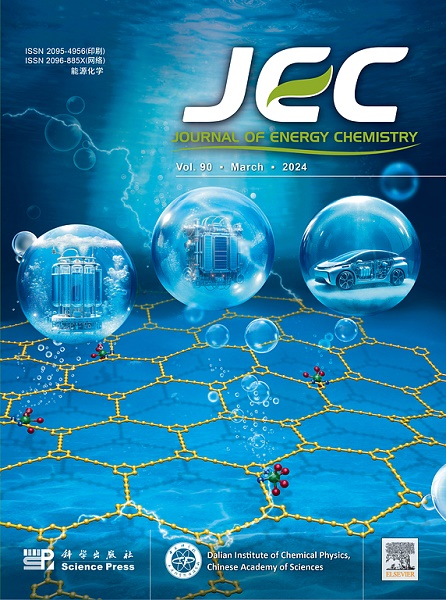Construction of hard carbon with abundant closed ultra-micropores via a pre-oxidation strategy for high-efficiency sodium storage in the low potential plateau
IF 13.1
1区 化学
Q1 Energy
引用次数: 0
Abstract
Rationally regulating the porosity of hard carbon (HC), especially the closed pores matching the low potential plateau and the ultra-microporous structure suitable for Na+ embedding, has been shown to be the key to improving the sodium storage performance and initial coulombic efficiency (ICE). However, the preparation of such HC materials with specific pore structures still faces great challenges. Herein, a simple pre-oxidation strategy is employed to construct abundant closed ultra-microporous structures in soy protein powder-derived HC material, achieving a significant improvement in its ICE and platform capacity. The pre-oxidation process promotes the cross-linking degree of the soy protein, thereby hindering the directional growth of graphite domains during the carbonization process. The optimized HC exhibits ultra-high platform capacity (329 mAh g−1) and considerable energy density (148.5 Wh kg−1). Based on the ex-situ Raman and X-ray photoelectron spectroscopy characterization results, the excellent sodium storage capacity of the HC material is attributed to the synergistic effect of adsorption-intercalation/filling. The presented work provides novel insights into the synthesis of other biomass-derived HC materials with abundant closed ultra-micropores.

通过预氧化策略在低电位高原构建具有丰富封闭超微孔的硬碳,实现高效钠储存
本文章由计算机程序翻译,如有差异,请以英文原文为准。
求助全文
约1分钟内获得全文
求助全文
来源期刊

Journal of Energy Chemistry
CHEMISTRY, APPLIED-CHEMISTRY, PHYSICAL
CiteScore
19.10
自引率
8.40%
发文量
3631
审稿时长
15 days
期刊介绍:
The Journal of Energy Chemistry, the official publication of Science Press and the Dalian Institute of Chemical Physics, Chinese Academy of Sciences, serves as a platform for reporting creative research and innovative applications in energy chemistry. It mainly reports on creative researches and innovative applications of chemical conversions of fossil energy, carbon dioxide, electrochemical energy and hydrogen energy, as well as the conversions of biomass and solar energy related with chemical issues to promote academic exchanges in the field of energy chemistry and to accelerate the exploration, research and development of energy science and technologies.
This journal focuses on original research papers covering various topics within energy chemistry worldwide, including:
Optimized utilization of fossil energy
Hydrogen energy
Conversion and storage of electrochemical energy
Capture, storage, and chemical conversion of carbon dioxide
Materials and nanotechnologies for energy conversion and storage
Chemistry in biomass conversion
Chemistry in the utilization of solar energy
 求助内容:
求助内容: 应助结果提醒方式:
应助结果提醒方式:


